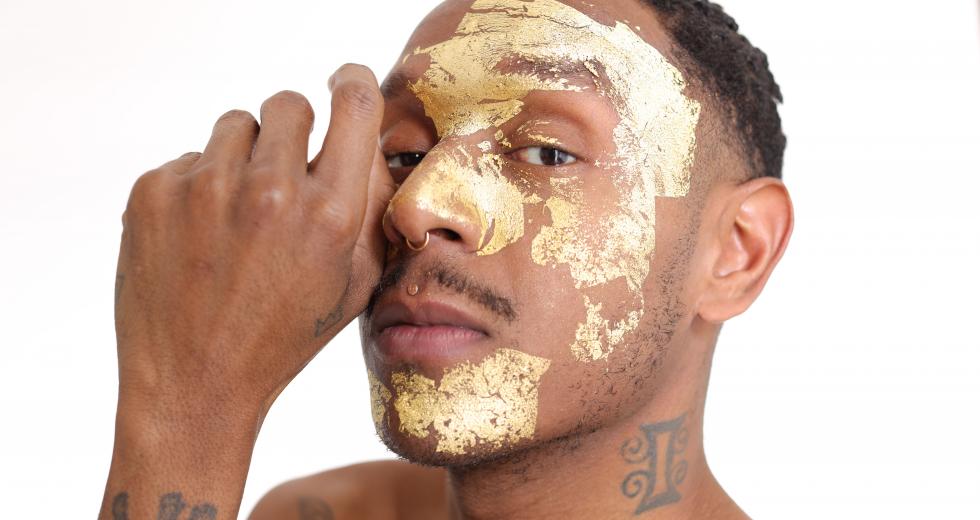For five years, Jupiter Lockett was in the background. He was a backup singer when he lived in Texas and Georgia, but he found the music industry to be fickle, so he left it behind. “Its lack of empathy and kindness — everyone’s just out for themselves,” he says. “So I came back to my roots, back to California.” Lockett still craved a creative outlet, though, so three-and-a-half years ago, he began to paint. Now he and his art are in the foreground.
“Angels We Have Heard on High; The Reapers. Act-C,” by Jupiter
Lockett was sold at the Crocker Art Museum’s Art Auction in 2020.
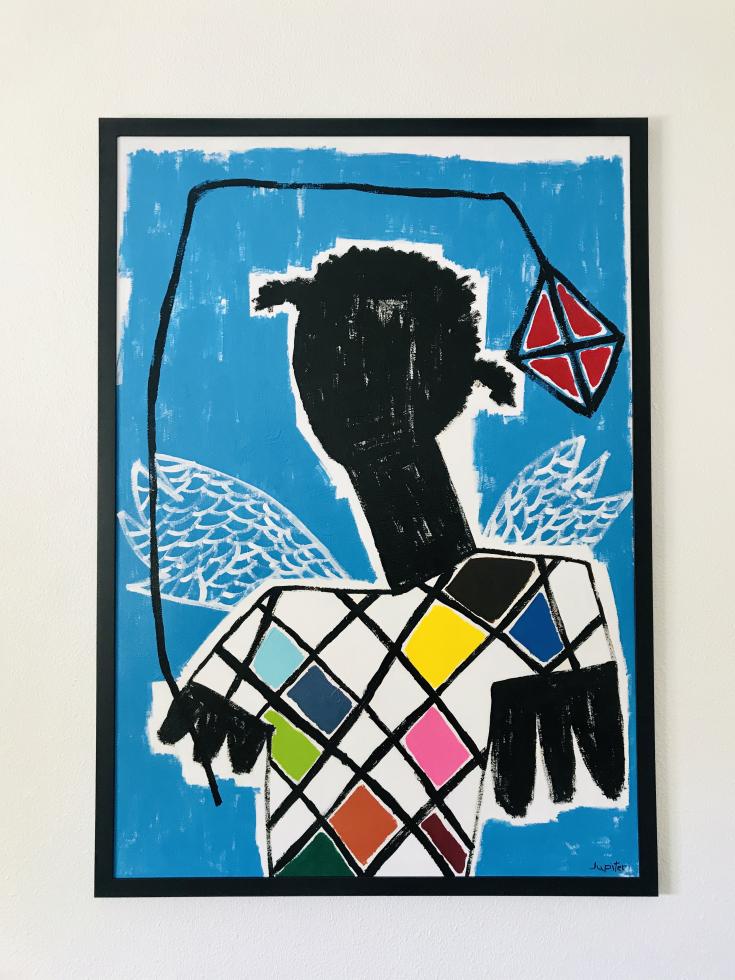
At the time, “I was basically doing stick figures,” he says. “I was just interested in reverting back to being a kid, like how I used to draw as a child.” While his stylistic approach is to paint in a free and childlike manner, the subject matter focuses on the Black experience and is intended to make the viewer uncomfortable.
Jupiter Lockett will be going to Greece and Bulgaria for art
residencies later this year.
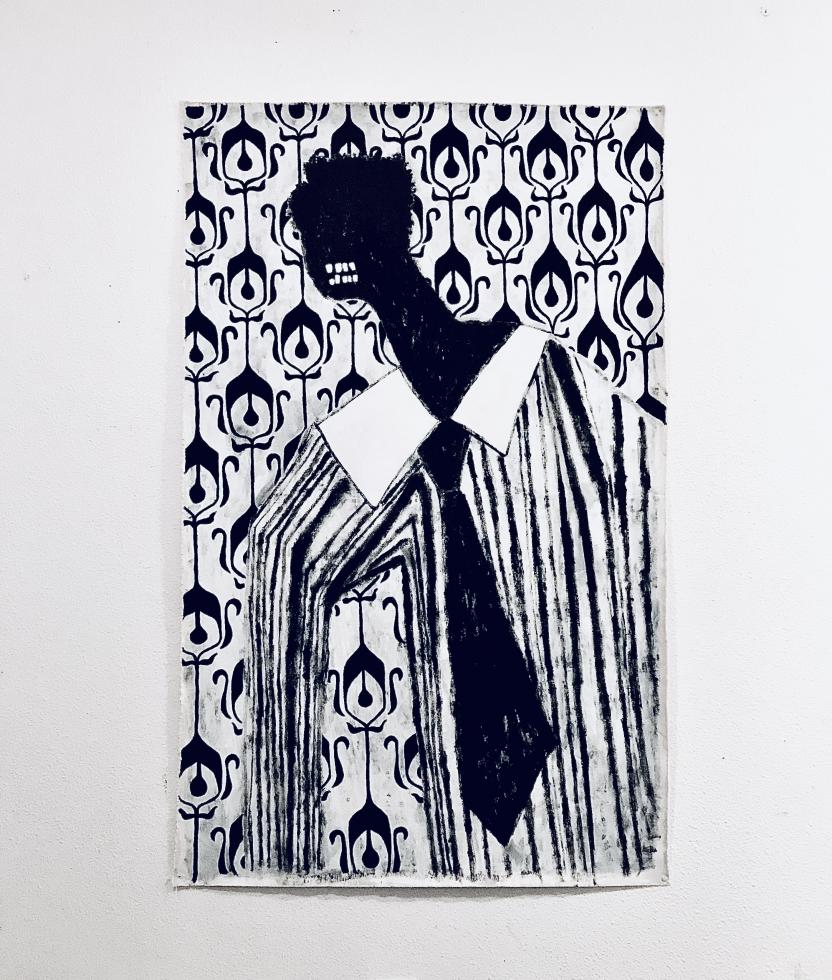
What brought you to Sacramento?
I needed a change of scenery. And my family was out here, my mother’s side of the family. So I wanted to get back in touch with them. … (There’s been) a lot of growth spiritually, mentally, physically … because two years ago, my mother passed away. … It’s hard to put into words when it comes to her or her absence. …
I love Sacramento. It’s a big town, but it’s small. And it allows the artists to grow and just evolve.
I’d like to hear more about your experience on that.
The community (here) is really into supporting the artists. … There’s so many murals in Sacramento, which is crazy when you think about it. It’s not just crappy little street murals. No, like these artists were paid and commissioned to do this. … And since I’ve been here, the city has really looked out, as far as putting my work on the Golden 1 arena at (Downtown Commons), being in the 42nd annual Crocker Art Auction and the Verge Center for the Arts auction. …
It’s a sense of family. Out here in the art community, they really do appreciate you. It took me a while. … People weren’t just automatically handing me stuff, you know? But they’re like, “Oh, you can paint. OK, well, show us what you got, and let’s talk about your work.”
Has the art industry or community provided any disappointment in similar ways that the music industry did?
Oh, yes. Artists who don’t play it safe aren’t really given the red-carpet treatment. So if you’re playing it safe, if you paint landscapes and fields and whatnot, or geometrical shapes, people like that stuff. When you start painting Black people, specifically — not even paintings of Black people being lynched or shot or anything like that, just Black people — it makes folks uncomfortable and makes the art world uncomfortable.
Houndstooth is a recurring pattern in Jupiter Lockett’s
paintings.
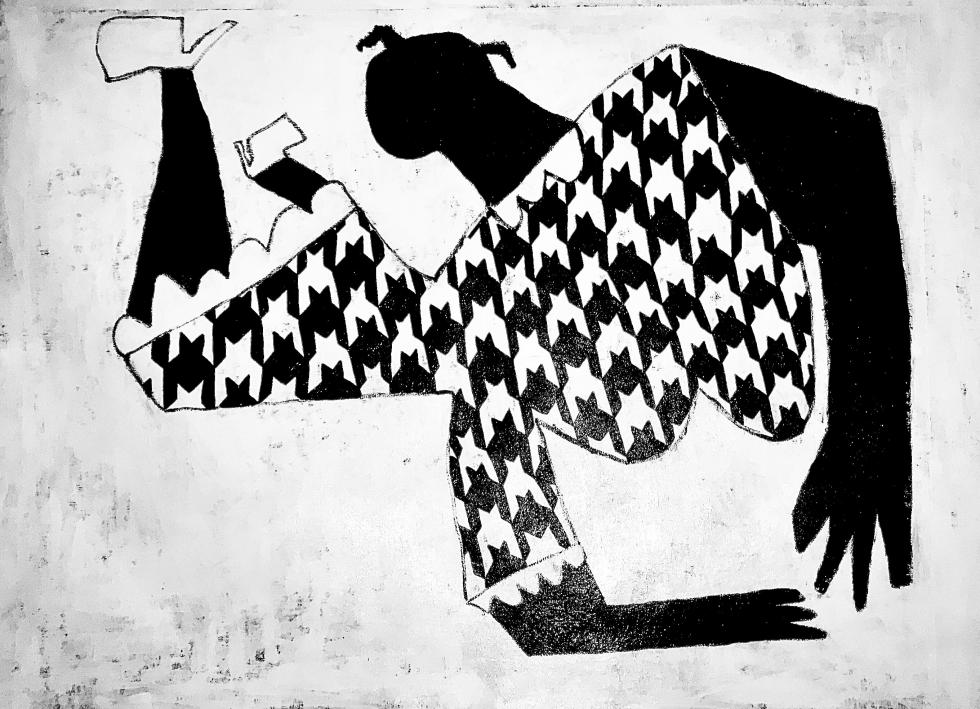
With that, I had to learn how to be steadfast in who I am and have a strong knowing in self. I can’t help those people if they’re stuck on that lower frequency or that unevolved frame of mind. … Now it’s turned around, because I wasn’t trying to play by the rules or listen to what these galleries were saying.
So it’s still happening but on a different frequency?
Yeah, I would say a different frequency. Since Black Lives Matter is hot, and people are wanting to be woke and evolved, they’re trying to show some form of solidarity with working with Black artists. So they’ll give us opportunities but may not pay us the same amount that they will pay our white artist brothers and sisters. …
Recently, a lot of us Black artists out here have gotten together, and we talk weekly or biweekly, and we check in on each other. If we get opportunities or have ideas, we share them with each other … to help each other make money. …
While Jupiter Lockett’s stylistic approach is to paint in a
childlike manner, the subject matter focuses on the Black
experience and is intended to make the viewer uncomfortable.
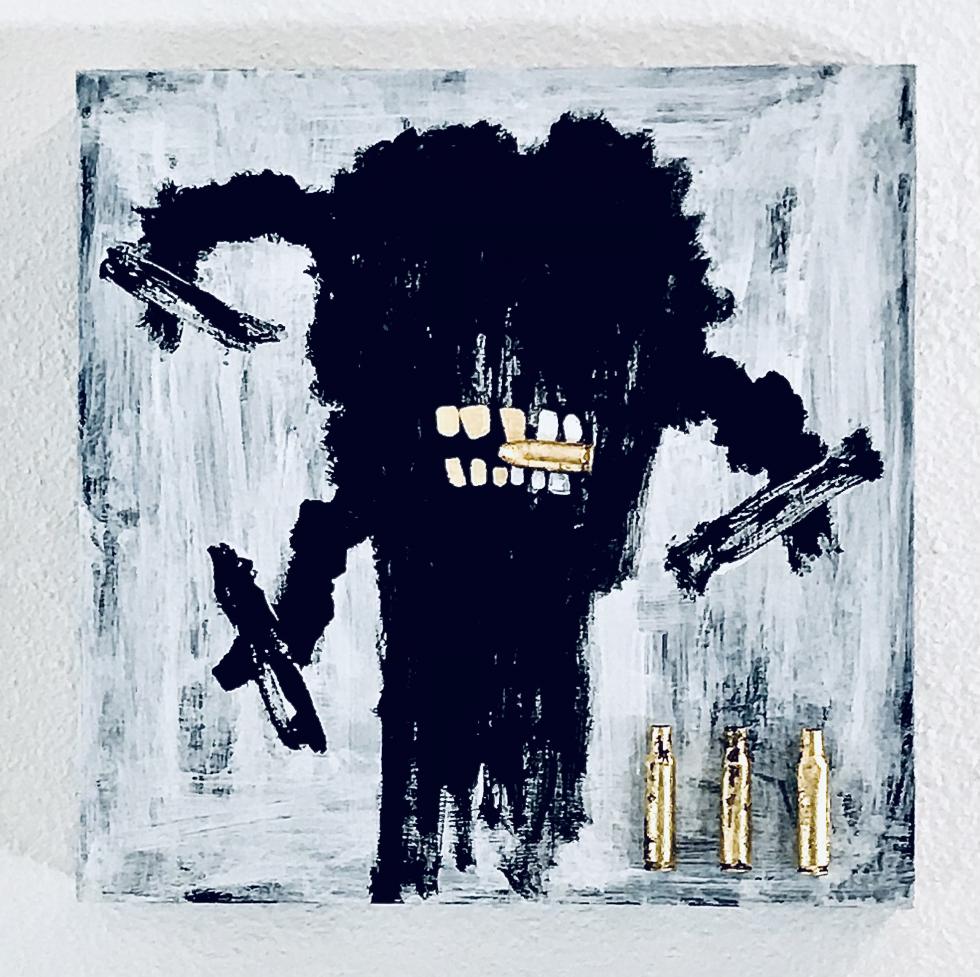
Don’t just use a Black artist — don’t just reach out to us now just because of all the Blackness that’s going on. … How are you going to contribute to the Black lives and Black art after this year, after next year, after Black History Month? … We want to be in these spaces in the right institutions. … Black folks want to see new, edgy art. We want to see stuff that makes us uncomfortable. … How are you going to be an ally after what you say you’re going to do?
Do you discuss with other artists, Black or non-Black, the types of compensation that you get? Do you disclose what you are offered in hopes to push the scale to be more equal?
Oh, yes. When we’re together in our support group, we definitely talk about how much we all make. We talked about what our bases are for commissions now as opposed to what they were when we first started painting. We talk about the inequalities in pay when non-Black artists get opportunities to do murals out here, and the same non-Black artists keep getting murals every single go-round. …
Lockett began taking painting seriously after he met an artist
while working at a restaurant in Sacramento; she saw his work and
encouraged him to pursue painting as a career.
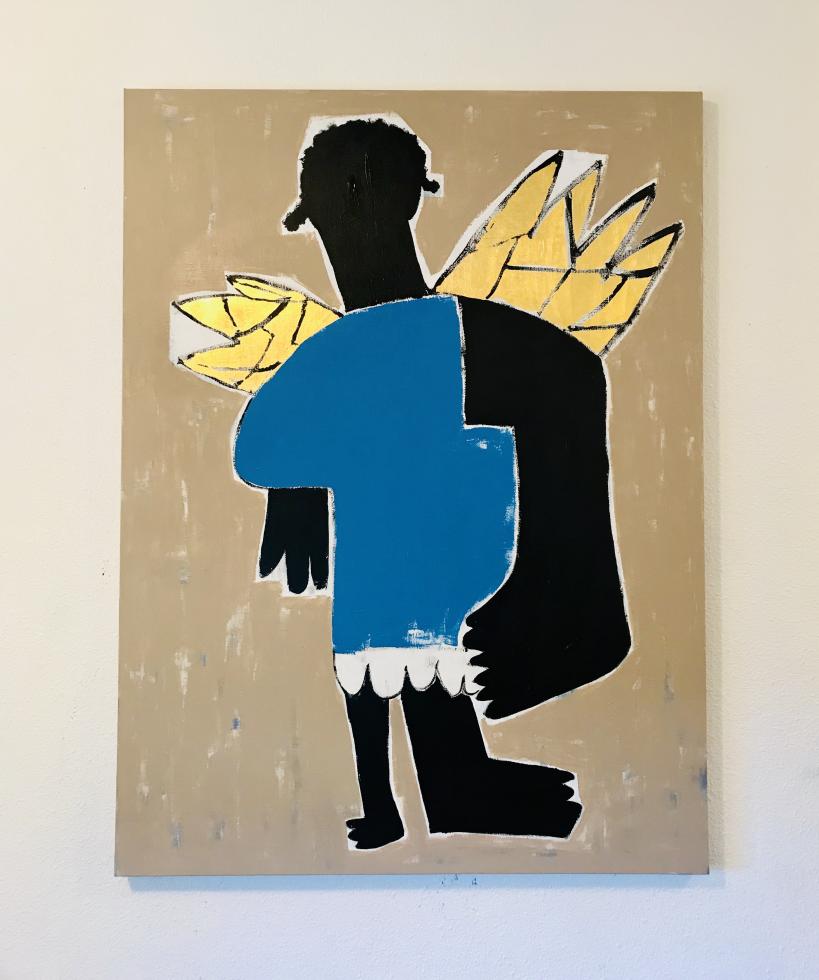
How have the artist residencies changed affected you in terms of what you’re producing, your exposure and your clients?
It’s challenged me to really be patient, to really be still. That’s the main thing: Take everything in, all your new surroundings, and then hone in on that and start to create. …
I learned when I went over to France to live life more beautifully. I’ve learned the art of living a beautiful life, a luxurious, lavish life, you know, and … letting my art create that lavish life for me. Meeting those people out there, my clientele, my friends have changed. … You get (an) upper echelon of clientele. So talking with museum directors who were there, arts writers, photographers who shoot for Vogue and Neiman Marcus … there’s a whole life of abundance out there. … I’m going to these residencies, and my mind changes, my thought process has changed, and it’s going to change even more when I go to these other countries.
Jupiter Lockett paints on cardboard in addition to traditional
canvas for symbolic and aesthetic reasons. But he says using
cardboard makes some in the art world “look at you differently.”
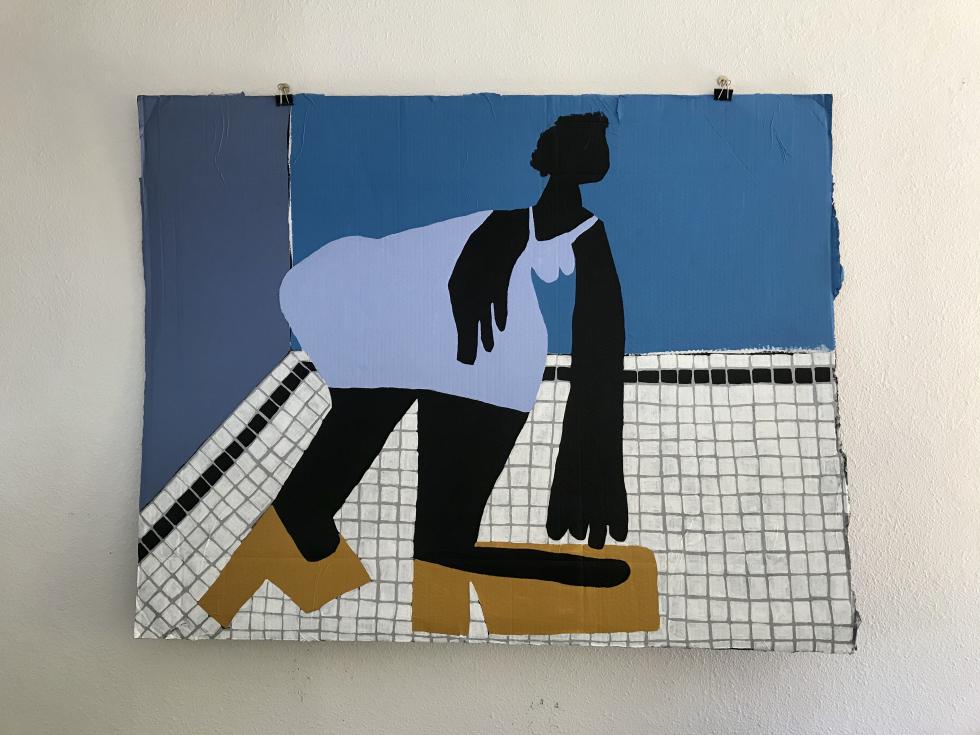
It has. My clientele is no longer people who want art because I’m Jupiter the artist. My clientele has changed to people who have been in Art Basel (art fair in Miami) and who are giving me opportunities and putting me in their art books. It’s just different. Inviting me to different dinners that I would never be at before if I was still selling $50, $60 art. … Once you change your price point, it brings in a higher price point of people. It brings in people with actual money who actually want to spend money on art. … You have to grow with it. I would say all my friends, all my immediate people (around me) right now, are all artists or in some type of art form. …
Once one collector has a piece, and their other collector friends don’t have one, they’re like, “Who is that? I want that! How do I get in touch?” … (They ask me) “Do you have any more?” “I don’t have anything right now, but you’re on the list.” That sets up our whole year.
One of the materials you paint on is cardboard, and that is for symbolic as well aesthetic reasons. Can you tell me more about that?
I just love the aesthetic. I love the texture, I love how when you put paint on it, it folds up and turns. Just like with Black people … we’re put in situations — we have to adapt to what you put onto to it. … You can send gifts in cardboard. There’s so much you can do with it, and like us, we have gifts inside of us, and we’re destroyed, we’re kicked, whatever, and then those gifts are (bled) out. It’s very strong but also … sensitive. … If your work isn’t on canvas, they look at you differently.
Last year, you received a grant from the Black Artists Fund. How did that grant help you?
It all went to framing my pieces for my show at B. Sakata Garo. … I didn’t even have the money to get my pieces framed, and I was like, thank you for that ($1,000) grant. … And that Black Artists Fund grant has introduced me to a whole slew of other Black artists that I didn’t know of. Now we all can pool off of each other if we have any questions.
At the B. Sakata Garo show, how many pieces were sold?
None. But then, a month after, they all (10) sold. … A few were local (buyers), two were overseas and one was in New York.
Jupiter Lockett’s work was displayed outside of the Golden 1
Center in February for Black History Month. (Photo courtesy of
Jupiter Lockett)
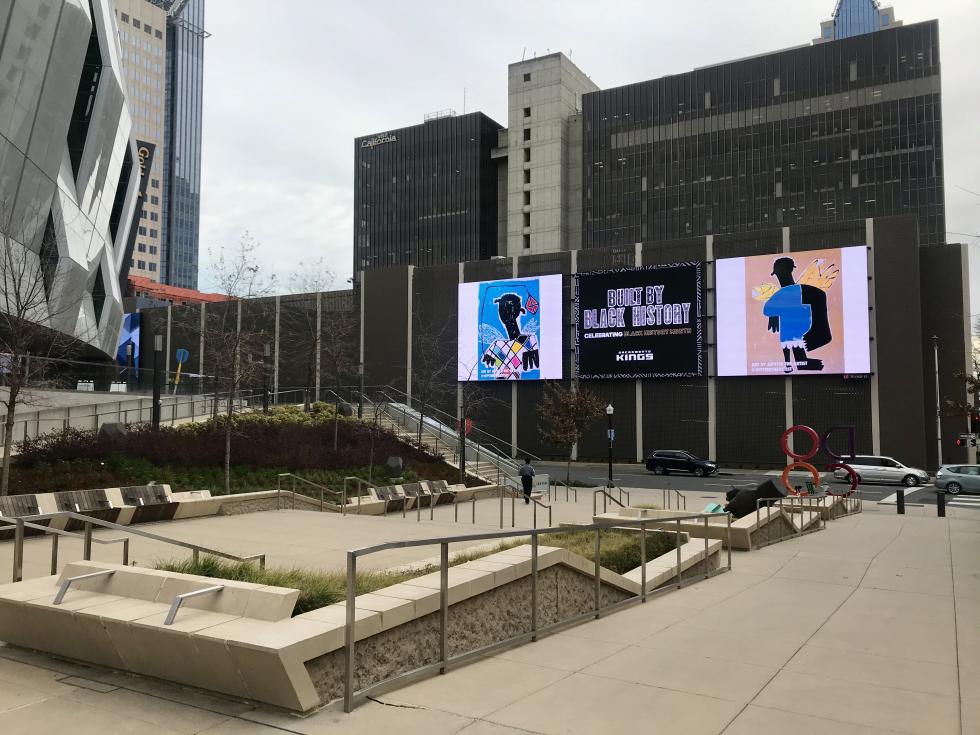
I paint when I want to now. I don’t paint every day like I used to. … I’m not interested in short-term art opportunities or opportunities for exposure. It needs to come with not just exposure, but with a nice check (laughs) and some longevity after this. I need to be able to get some clientele along with the opportunity. …
When I was in France, Oak Park (Brewing) reached out to me and wanted to collab on a beer, and so I designed a label and designed the flavor profile of the beer and everything. So now I have my own beer at Oak Park (Brewing) now called Stout Kang. Which is good, and from that, that had dominoed into (Slim & Husky’s Pizza Beeria) reaching out … to do a piece for this wall in the restaurant. So from that, this other person … (asked to buy) a piece.
Edited for length and clarity.
–
Stay up to date on art and culture in the Capital Region: Follow @comstocksmag on Instagram!
Recommended For You
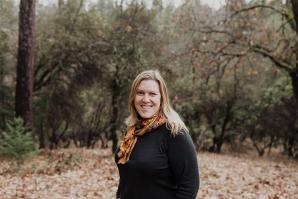
Art Exposed: Eden Halbert
Founder of Sierra Luna Photography used misfortune as an impetus to create her own business opportunities in the foothills
“If you had told me 30 years ago I would be a professional photographer, I’d be professionally working with dogs, I would have laughed,” Halbert says. “Now that I’m here, this is the only place I should be.”
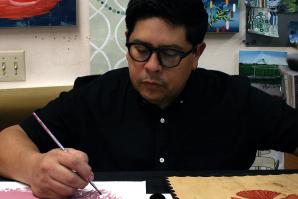
Art Exposed: Jose Arenas
Davis-based artists brings migration, culture and his experience as a first-generation American into his paintings
Belonging to two places and not quite fitting into either is a familiar feeling for many first-generation Americans.
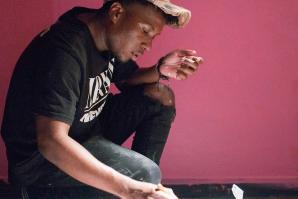
Art Exposed: Brandon Gastinell
From street art to corporate commissions, a Sacramento digital-mixed-media artist is finding success with his artistic clickbait
Because of some bold moves on his part and the exposure and connectivity that social media provides, Brandon Gastinell has transitioned from doing street art to work for major film studios and musicians.
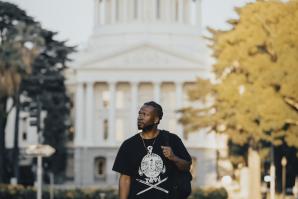
Art Exposed: Demetris ‘BAMR’ Washington
The Sacramento-based artist talks murals, Oak Park and the business of art
Demetris “BAMR” Washington is inspired by graffiti, cartoons and his faith in Christianity, the latter of which was also the inspiration for his alias: BAMR is short for Becoming a Man Righteously.



